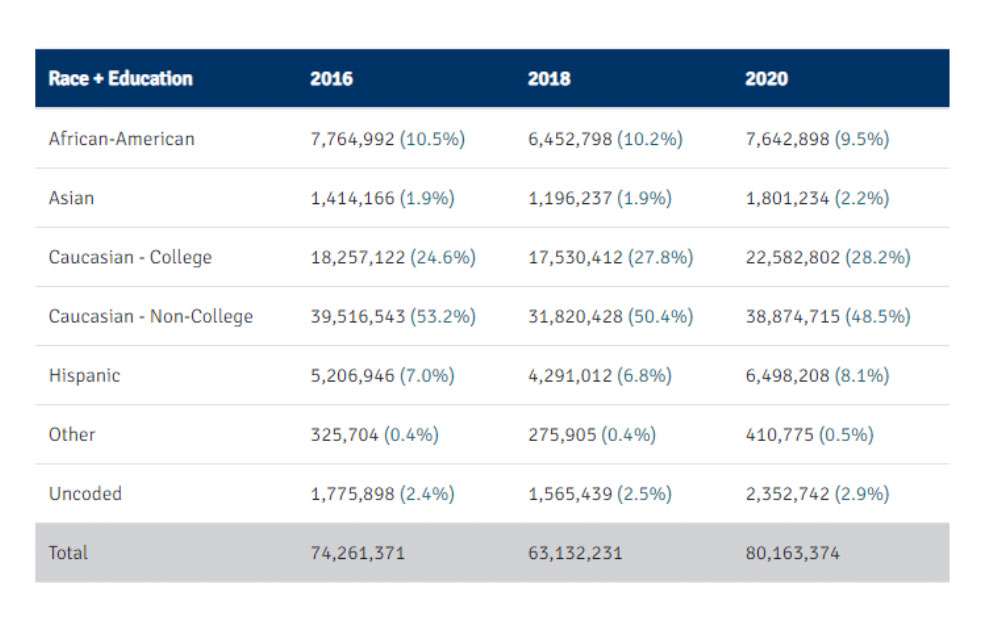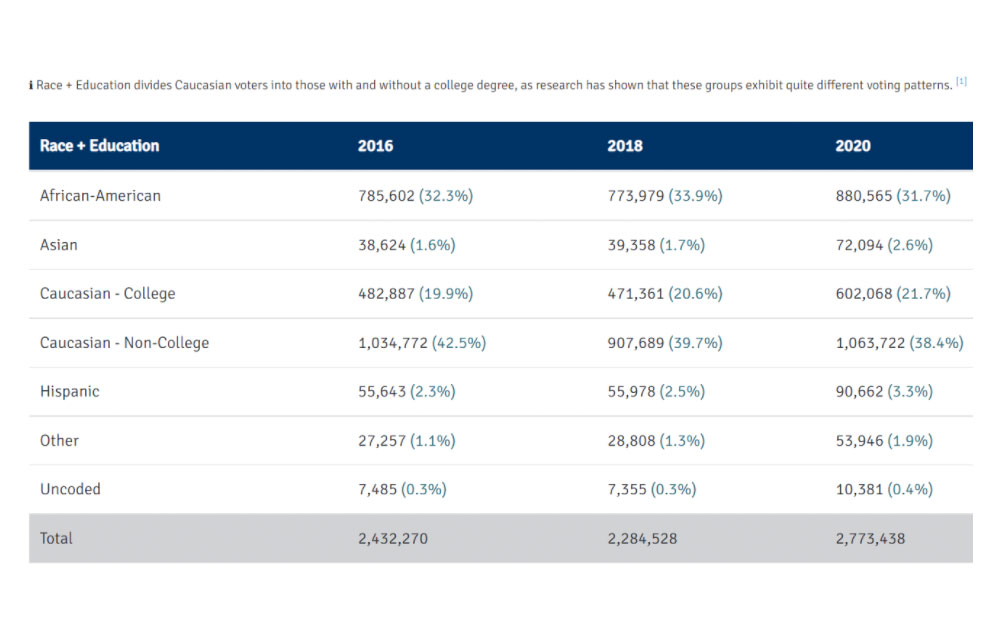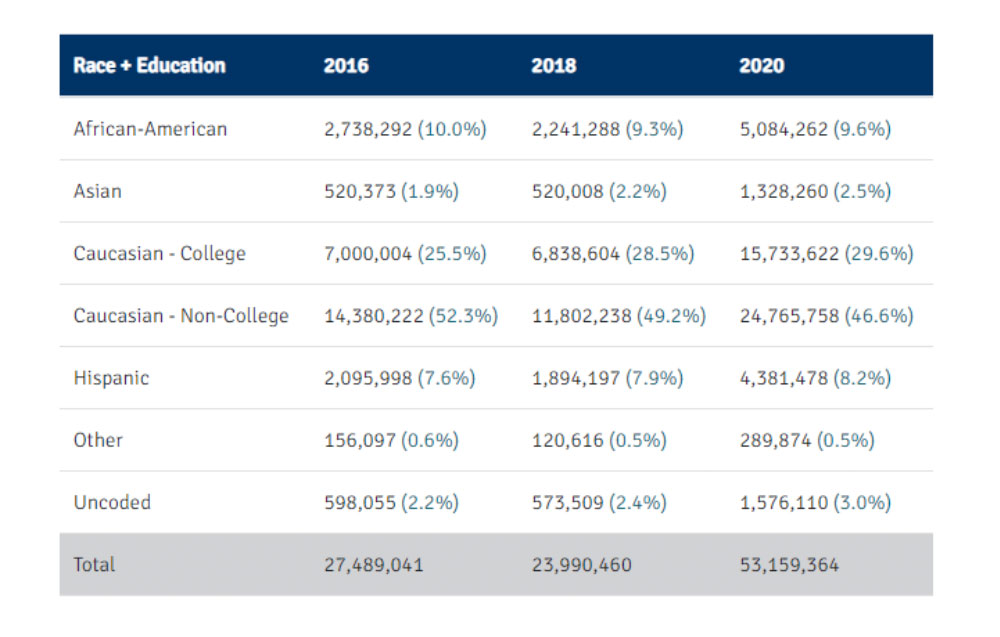Women of color play a critical role in American democracy. They represent some of the fastest growing voting blocs in the country and were instrumental in delivering the Biden-Harris ticket to victory in battleground states.
Nationally, turnout among women of color increased by over 10% from 2016 to 2020. This surge was especially prominent among Hispanic and AAPI women, whose total turnout grew by 24% and 27%, respectively. For context, national turnout for Caucasian women only grew by 6% from 2016 to 2020.

Although Black women’s overall national turnout in the 2020 election slightly decreased by 1.6% relative to 2016, they had an outsized influence in critical swing states like Georgia, Texas, and Florida.
Black women led the way for women of color in Georgia during the 2020 presidential primary election, representing almost 17% of the state’s electorate and 84% of turnout by women of color. By comparison, Black men only made up 11% of the electorate. Of the 880,656 Black women who turned out to vote, 82% also cast their vote early. AAPI and Latino women also saw gains in the state; between 2016 and 2020, the number of AAPI and Hispanic women voters increased by 86% and 63%, respectively. Meanwhile, the number of White college-educated women and White women voters who did not attend college increased by 14% and 3%, respectively.

Although President Biden did not win the swing states of Florida and Texas, the turnout growth of women of color in those states is certainly worth keeping an eye on, especially as Democrats grapple with defending their razor-thin majorities in the House and Senate in the upcoming 2022 midterm elections. Both states saw tremendous growth from HIspanic and AAPI women voters; AAPI women turnout grew by more than 71% over 2016 in Texas and 35% in Florida while Hispanic women turnout grew by more than 32% in Texas and almost 24% in Florida. Additionally, the number of Black women voters in Texas and Florida increased by 53,975 voters and 69,752 voters, respectively.
Our data also shows that in the midst of the global pandemic, women of color were also particularly motivated to vote early, taking advantage of mail-in ballots, curbside voting and extended early voting opportunities. Over 10.7 million women of color voted early in the 2020 general election, more than double the amount in 2016 and totaling 10% of all early voting ballots cast.

Even without the spectacle of President Trump in the 2022 elections, Democrats will have an uphill battle defending their slim majorities in Congress, let alone building a big enough political majority that can actually govern in Washington. It is becoming increasingly evident that this goal will be impossible without the support of women of color across all states. While there are many questions that lay in the road ahead to 2022, it is clear that women of color are a key voter bloc Democrats will need to significantly invest and engage with.